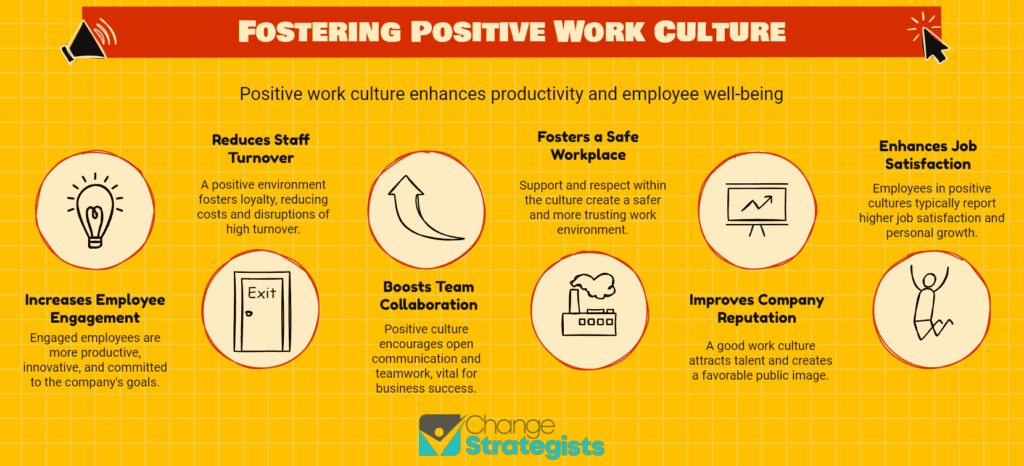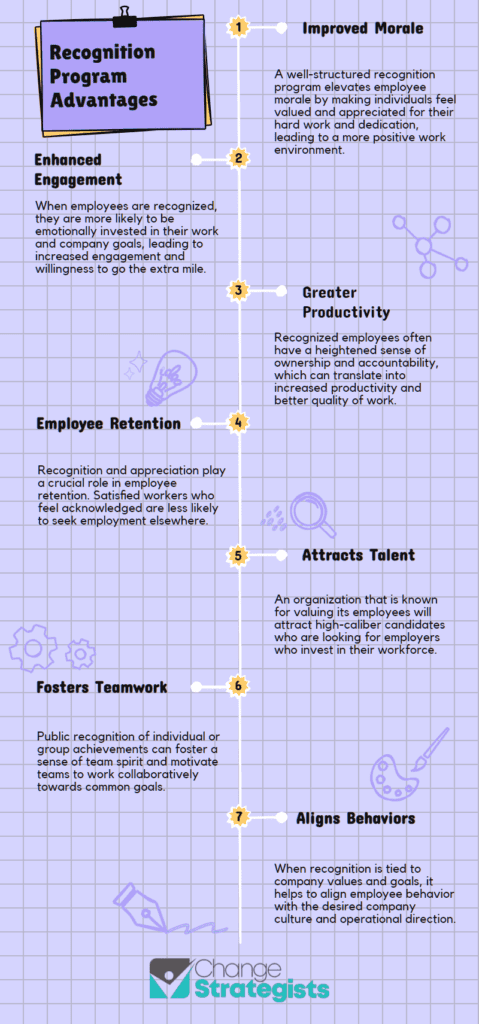You might have noticed a shift in workplace dynamics lately – a subtle change that has the potential to transform the very essence of your organization. As you navigate the intricacies of fostering a positive work culture, consider the pivotal role that leadership plays in this paradigm shift.
How can you inspire a team environment where trust, communication, and collaboration flourish naturally, leading to increased productivity and job satisfaction? Join us as we explore the essential components of building a positive work culture and discover actionable strategies to cultivate a thriving and harmonious work environment.
Key Takeaways
- Leadership shapes culture through vision and behavior.
- Employee engagement boosts morale, productivity, and retention.
- Trust and transparency enhance accountability and cohesion.
- Collaboration fosters unity, productivity, and goal achievement.
Understanding Positive Work Culture
To truly comprehend the essence of a positive work culture, one must investigate its profound impact on job satisfaction, employee engagement, and overall performance.
Creating a positive culture within the workplace is pivotal for fostering a sense of belonging among employees.

When a company prioritizes a positive work culture, it not only reduces turnover rates but also attracts and retains top talent more effectively.
This organizational environment is built on shared values, open communication, and a supportive atmosphere.
By investing in creating a positive work culture, companies can witness improved productivity and overall organizational success.
Positive work culture influences how employees perceive their roles within the company and the level of satisfaction they derive from their work.
It sets the tone for interactions, collaboration, and overall morale in the workplace. A culture that values its employees and promotes a positive work environment tends to have higher levels of employee engagement and motivation.
This, in turn, leads to enhanced performance and a more cohesive team dynamic. Ultimately, a positive work culture is the cornerstone of a thriving and successful organization.
Leadership’s Role in Culture Building
As you explore the role of leadership in building a positive work culture, consider the crucial aspects of vision and guidance that leaders provide.
Leaders serve as examples by embodying the values and behaviors they wish to see within the organization.
Vision and Guidance
Leadership’s pivotal role in fostering a positive work culture is exemplified through setting a clear vision and providing guidance that aligns employees towards shared values and goals. Effective leadership influences employee behavior, shaping the organizational culture.
By communicating the company’s vision, values, and goals, leaders create a sense of direction, unity, and purpose within the workplace. This guidance is vital for creating a supportive and inspiring work culture.
Employees look to leaders for inspiration and direction, seeking a cohesive environment where they feel connected to the company’s mission. Strong leadership involvement in articulating and embodying these elements is essential for cultivating a work culture where individuals feel motivated and united in their efforts.
Setting Examples
By embodying the values and behaviors you wish to see in your team, you can effectively set the tone for a positive work culture. Leadership behavior plays a pivotal role in shaping the workplace environment, with 70% of employees pointing to leadership as the key influencer.
Clear communication of vision and values by leaders not only enhances employee engagement by 21% but also fosters a sense of unity and purpose within the team. Companies with strong leadership witness employee engagement levels that are 50% higher, indicating the significant impact leadership has on the overall culture.
Providing recognition and rewards, exemplifying work-life balance, and prioritizing employee retention are all ways in which leadership influences a positive work culture.
Employee Engagement Strategies
When considering employee engagement strategies, it’s vital to focus on:
- Recognition programs
- Team building activities
- Effective communication channels
These elements play a key role in fostering a positive work environment and enhancing employee morale.
By implementing these strategies, you can:
- Boost productivity
- Decrease turnover rates
- Ultimately drive profitability within your organization.
Recognition Programs
Recognizing the efforts and contributions of employees through structured recognition programs is a crucial strategy for enhancing employee engagement and fostering a positive work culture.
Employee recognition programs improve engagement by up to 60%, boosting morale and productivity.
Peer-to-peer recognition tools play an essential role in increasing employee satisfaction and retention rates greatly.
Companies with effective recognition programs experience a 31% lower voluntary turnover rate, while employee recognition leads to a 41% lower absenteeism rate, contributing to a positive work culture.
These programs also enhance teamwork, collaboration, and overall job satisfaction among employees.
Implementing such initiatives not only acknowledges individual achievements but also cultivates a sense of belonging and appreciation within the workplace.

Team Building Activities
Moving from the foundation of recognition programs, now let’s explore how team building activities serve as effective strategies for boosting employee engagement within the workplace.
Team building activities enhance collaboration and communication among team members, fostering trust and ultimately improving productivity. Engaging in these activities not only boosts morale, motivation, and job satisfaction but also creates a sense of unity through shared experiences.
Communication Channels
Effective employee engagement strategies rely on utilizing a variety of communication channels, such as emails, intranet, and team meetings, to guarantee transparency and foster a strong sense of belonging within the workplace.
To enhance communication channels for better engagement, consider the following:
- Implementing regular feedback sessions via surveys or suggestion boxes.
- Leveraging communication tools like Slack, Microsoft Teams, or Zoom for real-time interactions and collaboration.
- Sharing updates, recognizing achievements, and promoting a positive work culture through effective communication.
Creating Trust and Transparency
To foster a culture of trust and transparency in the workplace, prioritize open and honest communication channels with your team members.
Trust and transparency are foundational elements of a positive work environment. By building trust and fostering honesty within your team, you create a space where employees feel valued and respected.
Transparent communication not only enhances accountability but also boosts employee engagement and productivity. When trust is established, resolving conflicts becomes more efficient, leading to a more harmonious work environment.
Incorporating transparency into decision-making processes promotes fairness and inclusivity, contributing to a cohesive workplace culture.
As a leader, your commitment to openness sets the tone for the entire team. Encourage feedback, address concerns promptly, and demonstrate integrity in your actions.
This approach not only enhances employee morale but also strengthens organizational cohesion.
Embrace transparency as a tool for creating a trusting environment where individuals feel empowered and valued.
Fostering Collaboration and Teamwork
Fostering collaboration and teamwork among your team members is essential for maximizing productivity and achieving shared goals efficiently.
By cultivating a culture of teamwork, you create a positive workplace environment that not only boosts employee engagement but also enhances job satisfaction and decreases turnover rates.
Here are three key strategies to foster collaboration within your team:
- Encourage open communication: Establish channels where team members can freely exchange ideas, provide feedback, and express concerns. Effective communication is the cornerstone of successful collaboration.
- Promote a sense of shared purpose: Clearly outline team goals and guarantee that each member understands their role in achieving them. When everyone is working towards a common objective, collaboration naturally flourishes.
- Recognize and celebrate team achievements: Acknowledge the contributions of individual team members and the collective effort. By celebrating successes together, you reinforce the value of teamwork and motivate your team to continue collaborating effectively.
Recognition and Rewards in Culture
Recognition and rewards play an important role in shaping a positive work culture by greatly impacting employee motivation and satisfaction levels.
Implementing formal recognition programs can substantially boost employee engagement and loyalty within an organization.
Companies that prioritize creating strong recognition cultures often experience lower turnover rates, showcasing the importance of acknowledging and appreciating employees’ efforts. Peer-to-peer recognition is a powerful tool for fostering a culture of appreciation and teamwork, where employees can recognize each other’s contributions.
Tailoring rewards to individual preferences can enhance the effectiveness of recognition programs, ensuring that employees feel valued in a way that resonates with them personally.
By incorporating these elements into the workplace, a positive culture can be cultivated, leading to higher employee satisfaction and a more motivated workforce.
| Approach | Key Benefit |
|---|---|
| Formal Recognition Programs | Increase Employee Engagement |
| Peer-to-Peer Recognition | Fosters Appreciation and Teamwork |
| Tailoring Rewards | Enhances Effectiveness of Programs |
| Lower Turnover Rates | Associated with Strong Recognition Cultures |
Frequently Asked Questions
What Are Four 4 Ways to Encourage a Positive Work Culture?
To encourage a positive work culture, focus on team building, employee recognition, open communication, and work-life balance. Leadership support, employee wellness, diversity inclusion, positive reinforcement, collaboration opportunities, and continuous improvement also play key roles in creating a supportive and motivating environment.
What Makes a Positive Work Culture?
To create a positive work culture, prioritize team collaboration, employee well-being, open communication, recognition, diversity inclusion, work-life balance, trust, and transparency. Encourage continuous improvement, positive reinforcement, and social responsibility. Your efforts will foster a thriving environment.
What Is the First Step to Build a Positive Company Culture?
To build a positive company culture, start by defining core values that align with the mission. Communicate these values effectively, involve employees in discussions, and hire individuals who fit the culture. Consistent communication and active participation are key.
What Are the Most Important 2 3 Characteristics of Our Company’s Culture That We Must Retain?
To maintain our company’s culture, guarantee high employee engagement, clear communication, and strong team collaboration. Emphasize respectful interactions, recognition programs, work-life balance, diversity inclusion, trust building, continuous improvement, and supportive leadership. These values define us.
Final Thoughts
You’ve learned about the importance of building a positive work culture through effective leadership, employee engagement strategies, and fostering trust and transparency.
Did you know that companies with a strong culture have 65% lower turnover rates than those with a weak culture?
By prioritizing a supportive and inclusive work environment, you can cultivate a culture that boosts employee morale, engagement, and overall job satisfaction, leading to greater success for your organization.
Keep up the great work!





